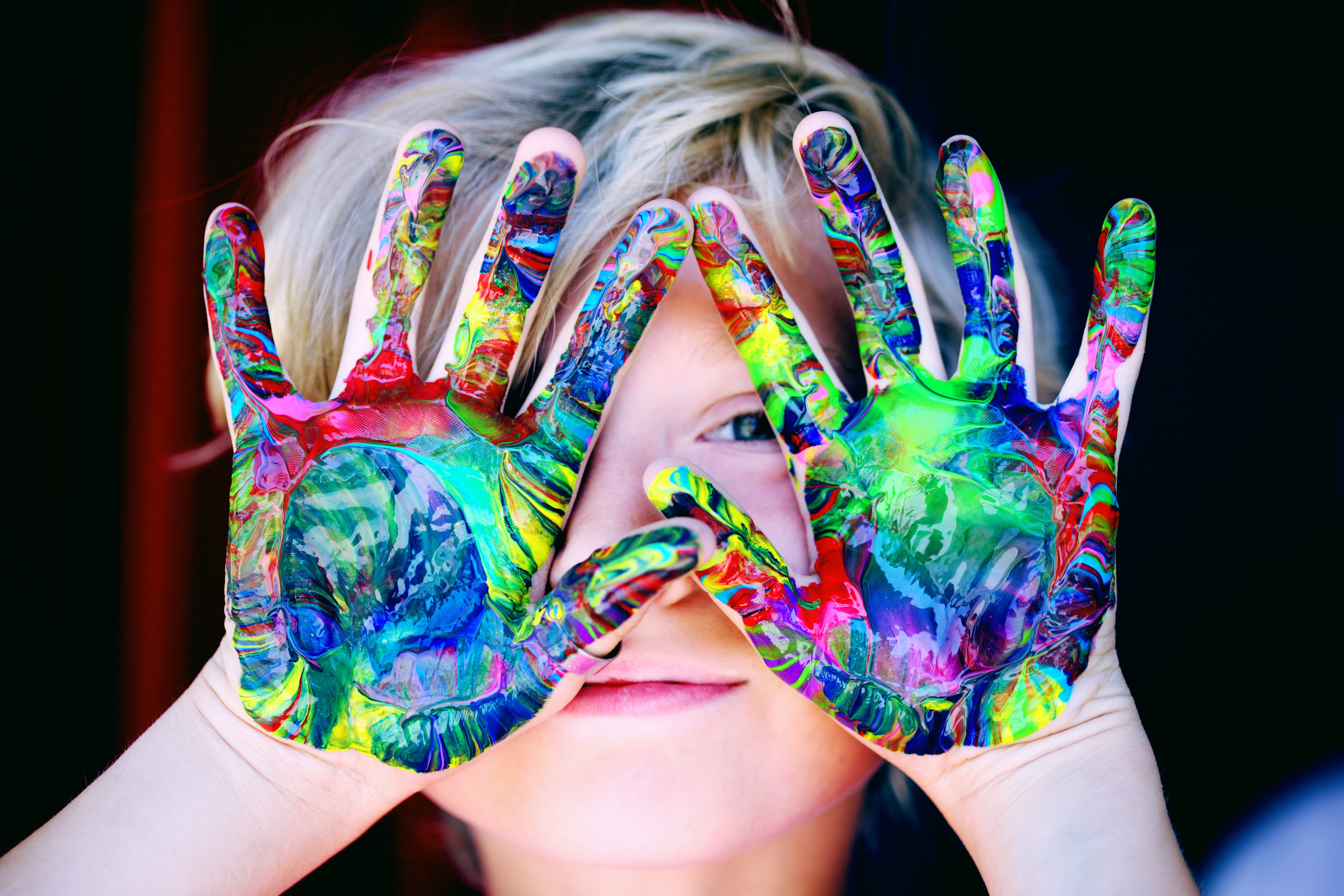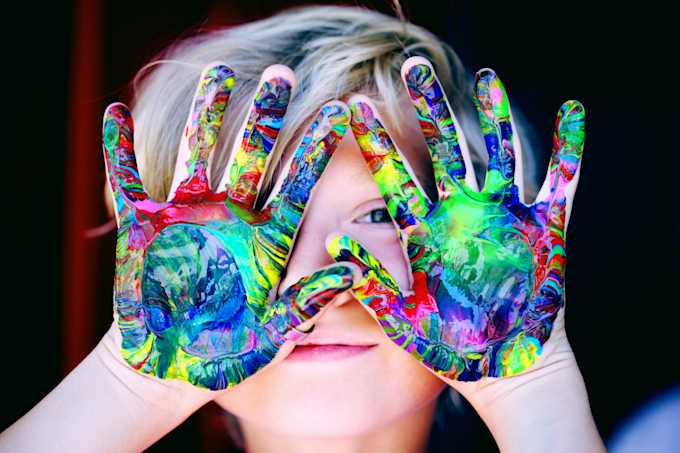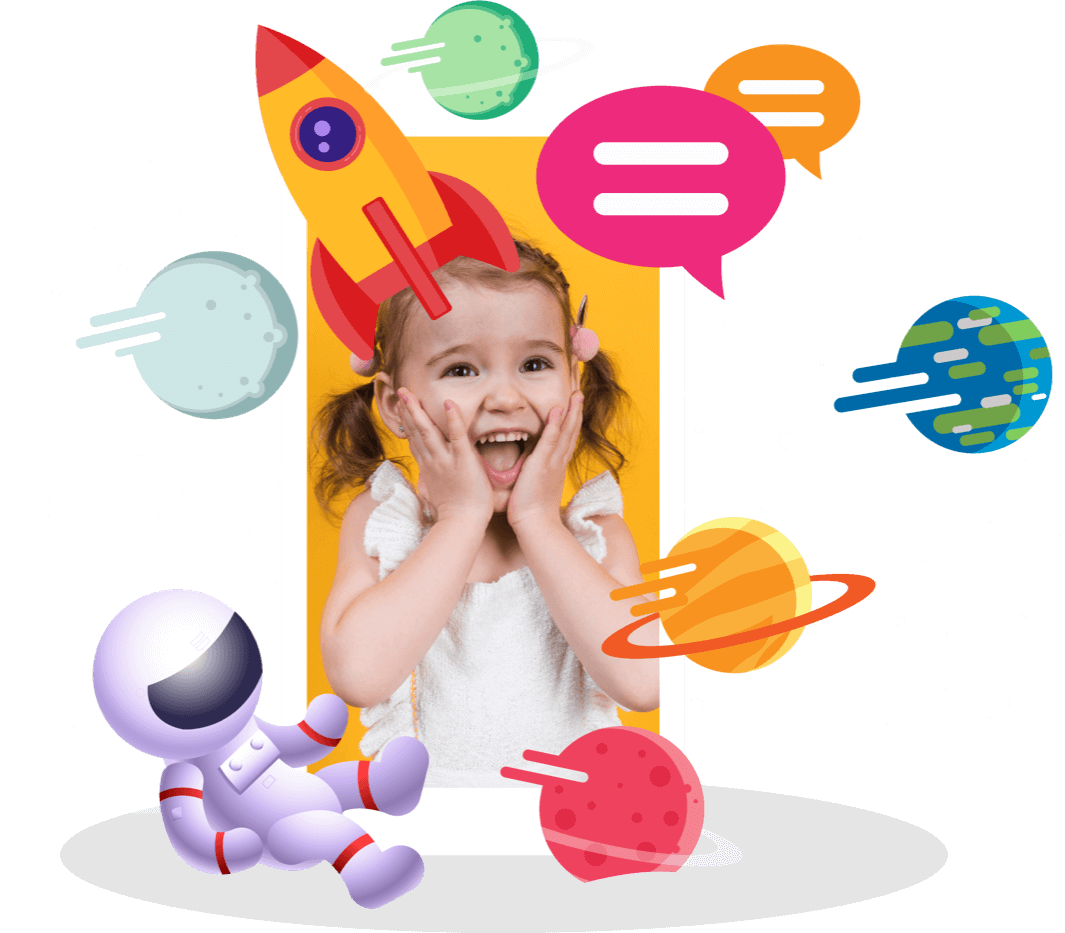View Table of Contents
- 10 Early Signs of Autism Spectrum Disorder
- What Are Some Early Signs of Autism in Toddlers?
- What Are the Signs of Autism in a 2 to 3-Year-Old?
- Difference of Autism Signs in Boys and Girls
- What Are the Tell-Tale Signs of an Autistic Adult?
- Early Signs of Autism in Children
- Early Signs of Autism in Babies
- Can You Detect Autism in Newborns?
- Early Signs of Autism in Babies Aged 0-3 Months
- Early Signs of Autism in Babies 4-7 Months
- Early Signs of Autism in Babies 7-10 Months
- Early Signs of Autism in Babies 10-12 Months
- Early Signs of Autism in Babies 1-year-Old
- Early Signs of Autism in a 2-Years-Old
- Early Signs of Autism in a 3-Years-Old
- Early Signs of Autism in a 4-Years-Old
- Early Signs of Autism in a 5-Years-Old
- Early Signs of Autism in Preschool kids
- Early Signs of Autism in Girls
- Early Signs of Autism in Boys
- Development of Infants with Early Signs of Autism
- Does Autism Change in Male and Female Babies?
- Social Signs of Autism in Children
- Communication Signs of Autism in Children
- Behavioral Signs of Autism in Children
- Unusual Interests and Behaviors of Autism in Children
- Possible Red Flags for Autism in Childhood
- Do Autistic Babies Laugh?
- Baby Autism Tests
- Baby Autism Checklist
- How Pediatricians Screen for Autism
- Inflexibility Signs of Autism in Children
- Early Signs of Autism in Adults
The signs and symptoms of being on the Autism spectrum widely differ depending on various aspects of the individual. One of such aspects is their age. Some signs may clearly indicate that there might be a developmental delay for a child, which can be interpreted as something else in adults. These signs can be observed in the behaviors of the individual.
So, how are the signs of Autism seen across the age groups? What is the age of Autism onset?
10 Early Signs of Autism Spectrum Disorder
You may be wondering when can a child be diagnosed with autism. Studies have shown that autism can be diagnosed as early as 14 months. It typically appears in the early ages of an individual.
This means that the infant’s first year is crucial in terms of the diagnosis of the disorder.
Many children with autism spectrum disorder show developmental differences. This can especially be seen in their social and language skills. There are certain developmental milestones babies hit while they are growing up.
Parents and caregivers should observe their children’s behaviors so as to be able to catch the disorder early on. Although age of autism onset is not specifically determined, CDC states that autism age of onset is before the age of three, and it is a lifelong disorder. The symptoms begin to show within the first year of a child’s life.
The symptoms of being on the spectrum can be detected. These signs can be detected by tracking the behaviors of the child and observing their day to day life and reactions. The 10 early signs of Autism Spectrum Disorder in children can be as follows:
- Little to no eye contact during infancy,
- No babbling,
- No smiling,
- Not responding to when called by their names,
- Not pointing to objects,
- Tendency to being alone,
- Limited to no speech,
- Falling into repetitive behaviors,
- Not expressing emotions,
- Not seeming attached to parents.
Subtle differences caused by autism may appear before the child’s first birthday. These differences will be visible in children’s interaction with their surroundings.
When 2-months old, babies generally begin to smile at people, coo, and are able to pay attention to faces. This may not be the case for children with autism spectrum disorder. By 6 months, if a baby;
- doesn’t smile,
- doesn’t smile as big,
- is not showing any other warm, joyful, and engaging expressions
It may be a sign of autism spectrum disorder.
By 9 months, children with ASD:
- make limited or no eye contact with anyone
- don’t share sounds,
- don’t smile back-and-forth with parents.
Before their first birthday, babies on the autism spectrum,
- may not babble,
- may not reach for things,
- may not point to things,
- may not wave back,
- may not respond to their names.
These are some of the early signs indicating that the child may have autism spectrum disorder. Since such signs are seen before the child turns one-year old, they may be easy to miss.
If noticed, these signs should be told to the baby’s physician during their well-being appointments. Caregivers can request that tests be done to detect if the baby has autism spectrum disorder.

What are Some Early Signs of Autism in Toddlers?
When a baby becomes a toddler, various developmental differences, signs and symptoms may become more apparent with the growing age of the child.
During their first year, toddlers with autism spectrum disorder may not:
- like seeing new faces,
- like being cuddled,
- show any affection,
- point their fingers to things,
- respond to their names when they are called,
- speak, or speak few words,
- ask for help when they need it, and struggle instead,
- initiate conversation.
By the time children with autism spectrum disorder are 18 months old, they,
- may not be able to walk, or w__alk only on their toes__
- may find certain sounds, tastes and smells upsetting,
- may fall into repetitive movements, like flapping their hands.
So when does autism start? The autism signs may be more noticeable compared to the signs presented early on. For instance, you may notice that an 18 month old child with autism may not start talking. However, the majority of children with autism are not diagnosed before the age of two due to missed signs by caregivers, or lack of access to specialists. There are autism spectrum test for toddlers, and other medical and behavioral tests are available. But it is also possible to observe and make notes.
Read: Autism Spectrum Disorder - The Definitive Guide
What Are the Signs of Autism in a 2 to 3 Year-Old?
By the time children turn the age of two, they generally speak or imitate the actions of those around them. However, children with autism at the age of 2 to 3:
- may not be able to speak,
- use items differently, like lining up the toys instead of playing with them,
- have limited speech,
- struggle to follow simple instructions,
- have limited inventory of sounds, words, and gestures,
- are not interested in playing with others,
- prefer to be by themselves,
- find it difficult to make friends,
- communicate in small words,
- have a hard time understanding concepts,
- may think literally,
- struggle to express how they are feeling,
- struggle to understand others’ thoughts and feelings,
- may come across as indifferent,
- like their routines,
- don’t like their routines to be interrupted,
- have keen interest in certain subjects or activities,
- repeatedly talk about their limited interests.
Come along with 200k+ families!
Explore the endless possibilities of learning!
Download for Free.
Difference of Autism Signs in Boys and Girls
The symptoms of ASD may range from mild to extreme, and there is no definitive list of symptoms that are sure to be shown by each and every child. On top of that, since boys are diagnosed with autism spectrum disorder four times more than girls , classic symptoms may be described in a way to refer more to the boys.
The symptoms are generally the same for the both. But, an autistic girl may be:
- quieter
- hide their feelings better
- good at imitating social behaviors.
This can make the impairs seem much less noticeable compared to the case of boys. Also, the autism traits in girls are reported less by their teachers.
It is important to note that not all children with autism show all of the signs. In addition, many children who actually don’t have autism may show a few of the symptoms and signs. That is why professional evaluation is of utmost importance.
There are certain developmental milestones children reach in terms of their language and social abilities. Caregivers should take notice of these milestones. They should observe children closely during the first few years of their lives. These are crucial times in terms of early diagnosis and intervention. Although not reaching a milestone at a specified time or achieving it late does not necessarily mean that the child has autism, it may be a sign of a developmental delay.
The symptoms and signs are not set in stone. They may change in the future and new ones may be added, but they are the results of extensive research on autism in children. Subtle differences of autism spectrum disorder may be seen before a child’s first birthday. It is important to observe if there is any developmental delay in children to be able to provide the best care possible starting early on.
Come along with 200k+ families!
Let's communicate better!
Download for Free.
What Are the Tell-Tale Signs of an Autistic Adult?
Autism spectrum disorder is one of the most common neurodevelopmental disorders. It can be seen in all groups of age. The Centers for Disease Control (CDC) states that the disorder does not discriminate between racial, ethnic and socioeconomic groups.
Oftentimes, certain severe forms of ASD are diagnosed before the child turns two. However, high-functioning individuals may not be recognized and diagnosed until later ages in their lives. There are high-functioning autism test for toddlers, but sometimes people may not be able to access these tests or may not be aware of them. The following are some of the reasons why autism may not be diagnosed.
- The level of science,
- Knowledge on autism spectrum disorder itself at the time,
- Lack of social and economic means they had,
This happens because autistic adults were not diagnosed when they were children.
Since autism spectrum disorder is still, in part, a mystery, studies generally focus on where the disorder stems from to figure out how it occurs in the first place. This has caused the focus to be on children. The adults who have never been diagnosed in their lives were partially left out in the research sphere. That is why it might be difficult to find a list of signs of autism spectrum disorder in adults.
However, in recent years, awareness of autism spectrum disorder in adults has increased significantly. This is due to the fact that the public is now aware of the signs and understands that a diagnosis can be made even later in life of a person.
Autism spectrum disorder impacts three main areas in an individual’s life: the social aspect, communication, and their behaviors.
Autism does not present the same signs and symptoms in every individual. So the signs of certain high-functioning autistic adults may be mistaken as ADHD signs. Or if they are not showing severe symptoms like impaired speech, they may not be recognized as being autistic.
Since we understand autism more and more every day, we are now able to differentiate and diagnose more adults with ASD.
There are certain signs that can be observed in autistic adults. They:
- struggle to understand others’ feelings and thoughts,
- may not interpret facial expressions,
- may not maintain back-and-forth conversation,
- have a difficult time understanding body language,
- may be keen on monologuing about their interests,
- struggle to keep up with the give-and-take aspect of communication,
- may feel anxious in social situations,
- may seem blunt and rude without meaning to,
- may prefer to be by themselves.
Similar to the signs seen in autistic children, adults with autism spectrum disorder;
- strictly adhere to certain routines,
- become uncomfortable when routines are disturbed,
- have limited interests,
- show restricted and repetitive behaviors,
- speak in a monotone voice,
- may not adhere to social rules.
Not all adults with autism show the same signs, or they may show only some of the signs. Some of the autistic adults may also exhibit extraordinary talents. They may be really good and successful in music, math , or art.
Autism is seen more in men than women. Autistic women, just like girls with ASD, may be better at hiding their feelings. They seem better at coping with social situations. Autistic females generally don’t fit the profile usually associated with boys and men. This causes diagnosing women to be more difficult than diagnosing men.
Late diagnosis may bring adults with autism spectrum disorder a sense of clarity. They may be able to understand why they feel in certain ways at certain situations, and those around them can learn how to better communicate with their loved ones, increasing their quality of life.

Early Signs of Autism in Children
Early diagnosis means early intervention. It helps provide your child a higher quality of life through teaching life skills with therapies and games.
There are certain signs to look out for while your child is growing up. They hit developmental milestones, indicating that their social, communicative and behavioral developments are on track.
So what are the early signs? Is covering your ears a sign of autism? Is oversensitivity to certain stimuli one? Here are some of the early signs that your child may need to be further examined and tested by your physician.
Early Signs of Autism in Babies
It’s okay and really normal to be concerned about your child’s growth as a parent or caregiver. Early indicators of autism in newborns might be subtle, but it’s critical to recognize them so you can get treatment if necessary. The good news is that with early care, many autistic children may improve and flourish.
A lack of responsiveness to their name being called, lack of eye contact, and lack of interest in other people are some of the initial signs of autism in babies. They may also shun physical touch or love and have delayed speech or babble. If you experience any of these symptoms in your newborn, contact your physician as soon as you can to discuss the signs of autism in babies. They can explain what’s going on and send you to specialists if necessary.
However, showing these signs of autism in babies doesn’t necessarily mean that your baby will definitely diagnosed with autism spectrum disorder. Every child is unique, and has their own pace of development. Some may develop differently than others and not follow the milestones one by one. But if you’re concerned about your child’s development, don’t hesitate to reach out for help. You and your child can overcome any obstacles and celebrate your child’s abilities with the help of professionals, family, and friends.
Can You Detect Autism in Newborns?
Autism spectrum disorder can be identified in babies as young as two months old. Although subtle signs can be missed if not observed closely, there are certain red flags.
Caregivers should observe the developmental milestones of their children to be able to detect early signs of autism. Parents should be aware of the eye contact of the newborns and follow the development.
From birth, all babies will look more at the eye part of faces. According to studies conducted with babies with eye-tracking technology, lack of eye contact is one of the signs that the newborn may have autism.
The following are some of the other signs seen in newborns as they grow older.
Early Signs of Autism in Babies Aged 0-3 Months
Shortly after they are born, babies begin to smile and coo at people around them. By the time they turn 2 months old, they are able to pay attention to faces.
If the child has autism spectrum disorder, this may not be the case. If a child doesn’t smile, or smile as big, and is not showing any warm expression, it may be a sign of autism spectrum disorder.
The following signs can also be seen by the time the baby turns 3 months old:
- Doesn’t respond to loud noises,
- Doesn’t grasp objects,
- Doesn’t follow objects with their eyes,
- Doesn’t babble,
- Doesn’t pay attention to new faces
Early Signs of Autism in Babies 4-7 Months
By the time the baby turns 7 months old, the following signs can be observed if they are on the spectrum:
- Shows no affection for parents,
- Doesn’t laugh,
- Doesn’t reach for things,
- Doesn’t turn their head to see where sounds are coming from,
- Doesn’t try to attract attention,
- Doesn’t have interest in playing games,
- Doesn’t smile on their own,
- Makes limited or no eye contact,
- Doesn’t share sounds.
Early Signs of Autism in Babies 7-10 Months
- Doesn’t share sounds
- Doesn’t smile back-and-forth
- Doesn’t mimic facial expressions
- Doesn’t respond to their name
Early Signs of Autism in Babies 10-12 Months
- Doesn’t crawl
- Doesn’t stand when supported
- Doesn’t use gestures
- Doesn’t wave or shake head
- Doesn’t say single words
- Doesn’t point to objects
- No baby talk
Early Signs of Autism in Babies 1 year Old
The following warning signs can be observed by the time the baby turns 1 year old.
- Doesn’t reach for items,
- Doesn’t crawl,
- Doesn’t say single words,
- Doesn’t wave back,
- Doesn’t point to things,
- Doesn’t respond to their names,
- Can’t stand when supported,
- Doesn’t babble
Early Signs of Autism in a 2 Year Old
If you feel like your 2-year-old doesn’t seem to be catching up with their development milestones, you may start looking for certain signs of autism spectrum disorder for any delays. Although signs of autism in 2 year old children, there are some hallmark indicators that you can keep an eye out for. Mild symptoms can be mistaken for being shy or the “terrible twos”. If you are asking yourself, “What are signs of autism in a 2 year old?,” we will be mentioning them below.
What are signs of autism in a 2 year old?
- Doesn’t speak more than 15 words,
- Can’t walk (or walk on tiptoes),
- Doesn’t know functions of household items like fork,
- Doesn’t imitate parents’ actions or words,
- Doesn’t use items for their own purposes,
- Doesn’t follow simple instructions
Early Signs of Autism in a 3 Year Old
As your kid grows older, certain signs become a little bit less clear compared to the first few months. You can get a better idea by checking the developmental milestones to see if your child is behind on some.
- Some autism red flags for 3 year olds are as follows:
- Prefers being alone,
- Doesn’t understand taking turns,
- Has delayed speech and language skills,
- Doesn’t respond to name,
- Avoids eye contact,
- Performs repetitive motions,
- Has difficulty expressing their feelings,
- Has difficulty understanding others’ feelings,
- Isn’t interested in interactions and socializing,
- Doesn’t answer questions properly,
- Doesn’t understand jokes,
- Gets upset about small changes in routines,
- Repeats what others say,
- Isn’t interested in making friends,
- Has obsessive interests in certain topics,
- Likes certain parts of objects, like the spinning wheel,
- Doesn’t make facial expressions,
- Doesn’t use gestures like waving.
Early Signs of Autism in a 4 Year Old
- Doesn’t make eye contact
- Plays by themselves
- Doesn’t answer questions properly
- Doesn’t tell stories
- Doesn’t understand certain concepts like time
- Doesn’t socialize
- Performs repetitive behaviors
- Doesn’t like physical contact
- Has difficulty in understanding feeling
- Doesn’t respond when their name is called
- Is not able to form sentences
- Speaks in flat tone
Early Signs of Autism in a 5 Year Old
Once your toddler grows up, certain signs can be missed or confused with signs of growing up. You may want to consult your child’s doctor if you see the following signs, which may mean your child has a developmental delay:
- Shows extreme behaviors like unusually aggressive, shy, or sad
- Doesn’t show a wide range of emotions
- Usually isn’t active
- Usually easily distracted
- Has trouble focusing on one activity for extended periods of time
- Doesn’t respond to people
- Can’t understand the difference between real and make-believe
- Doesn’t play with peers
- Doesn’t use grammar correctly
- Doesn’t talk about daily activities
- Loses skills they once had
Early Signs of Autism in Preschool kids
You may notice differences in your child’s behaviors and communication right before they go to school. Autism in preschoolers is not uncommon. There are some early signs indicating that your child is on the spectrum. Some of these signs may mean that your kid is at risk for autism spectrum disorder. Here are some of the signs listed by CDC:
- Speaking less than 15 words
- Seeming confused by the function of everyday items
- Not responding to their name when called
- Not walking
- Not imitating actions or words
- Being unable to push a wheeled toy
- Not following simple instructions
- Wanting to be by themselves
- Repeating phrases or words
- Strictly following routines
- Engaging in repetitive movements
- Not liking physical contact
- Losing skills once learned
- Not understanding others’ feelings or thoughts
Early Signs of Autism in Girls
Signs of autism in girls can differ than those seen in boys. Since ASD is seen more prevalently in boys than girls, the symptoms are generally described in the perspective of boys.
Despite being less common in girls, the symptoms are mostly similar for both sexes. They may be less obvious in girls. Every person is different so symptoms vary.
These are some of the common symptoms:
- Doesn’t respond to their name
- Avoids eye contact
- Doesn’t understand others’ feeling
- Doesn’t like physical contact
- Responds unusually to certain smells, tastes, sounds
- Repeats certain words or phrases
- Has problems with balance
- Has repetitive behaviors like rocking back and forth
Most girls show symptoms in infancy or early childhood. But they may not be recognized.
Some studies suggest that certain symptoms are seen more commonly in boys than in girls. Repetitive behaviors, for instance, may appear more often in boys. They are easier to spot.
In addition, girls deal with ASD differently than boys. They may hide their symptoms or spend more energy on adapting to social norms.
They are more able to form friendships. This may cause ASD to not be determined early on.
Early Signs of Autism in Boys
Autism is seen more prevalently in boys than in girls. Therefore, the core symptoms mostly coincide with the symptoms we have mentioned to be seen in children with autism in all ages.
Here are some of the early symptoms in autistic boys:
- Doesn’t make eye contact
- Has repetitive behaviors
- Struggles with speech
- Has difficulty in communication
- Doesn’t like physical contact
Development of Infants with Early Signs of Autism
While your baby is growing up, you may wonder if they are developing as they should. There are certain developmental milestones children hit as they grow up.
It is important to keep an eye out for these so that you can see if your child is behind on their development.
By the time Infants turn 2 months old, they begin to:
- smile at people
- can calm themselves
- try to look at their parents
- coo
- turn their head towards sound
If you notice that your baby is not engaging in such activities, you may want to get your child tested for ASD.
Does Autism Change in Male and Female Babies?
Symptoms of autism are mostly the same in both girls and boys. But since the disorder is seen more commonly in boy than in girls, it may be difficult to detect the symptoms in female babies.
Social Signs of Autism in Children
- Doesn’t like being cuddled
- Can’t start conversations
- Can’t maintain a conversation
- Lack of facial expression
- Doesn’t respond to their name
- Doesn’t point at objects
- Doesn’t understand simple instructions
- Wants to be alone
- Can’t easily make friends
Communication Signs of Autism in Children
- Doesn’t speak or has delayed speech
- Loses ability to say words or sentences learned before
- Poor eye contact
- Unusual tone of voice, robot-like and flat
- Difficulty understanding others’ thoughts
- Doesn’t understand the concept of turn taking
- Tends to not look at or listen to people
- Talks at length about their favorite subject
- Isn’t interest in establishing back-and-forth communication
Behavioral Signs of Autism in Children
- Has specific routines
- Develops specific rituals
- Is disturbed when their routine is disrupted
- Performs repetitive movements
- May engage in behavior causing self-harm, like head banging
- Has difficulty with balance
- Has difficulty in their movements like walking on toes
- Doesn’t engage in imitative or make-believe play
Unusual Interests and Behaviors of Autism in Children
Children with autism have certain behaviors that their peers don’t really engage in. Here are some of the unusual interests and behaviors seen in children with Autism:
- Lining up toys
- Using items for purposes other than the intended
- Having obsessive interests
- Sticking to certain routines
- Getting upset by minor changes in routines
- Playing with toys the same way every time
- Liking certain parts of objects, like the wheels
- Flapping hands, rocking back and forth
Possible Red Flags for Autism in Childhood
Symptoms of autism spectrum disorder (ASD) can be easy to miss in children. Looking for red flags may help determine if your child needs a diagnosis.
If you observe some of the following red flags in the list of autism symptoms, you may want to contact your child’s doctor.
Communication/Interaction
- Delayed speech
- No babbling or chatting
- Making odd sounds
- Flat toned, robotic voice
- No joyful expressions
- Doesn’t draw people’s attention to things
- Doesn’t point items
- Losing words previously learned
- Little or no imitating
- Difficulty in making eye contact
- Little to no use of gestures
Restricted and Repetitive Behaviors and Interests
- Excessive interest in particular objects
- Interest and limited topics
- Excessive interest in parts of objects, like wheels
- Unusual ways of moving their hands, like flapping
- Strictly adhering to routines
- Lining up toys rather than playing with them
- Overreaction to certain sounds or textures
- Repeating words and phrases over and over
Read more: Restricted and Repetitive Behaviours in Autism
Do Autistic Babies Laugh?
Babies with normal development begin to coo and smile at others before they turn one year old. However, babies with autism spectrum disorder may not smile at others. The definitive cause of this is unknown. They rarely smile or laugh.
Baby Autism Tests
Unfortunately, there is no blood test to detect autism. It is diagnosed by observing the child’s behaviors. Therefore, physicians and caregivers mostly rely on observation rather than lab results.
CDC has prepared a simple checklist that shows developmental milestones to see if your child is keeping up. You can check it out here .
There are Modified Checklist for Autism in Toddlers, Revised (M-CHAT-R) is a screening test. It asks questions about your child’s behavior.
It is intended for toddlers between 16 and 30 months of age.
The results of this test will tell you if you need further evaluation for your child.
Baby Autism Checklist
There is no official checklist that can definitely determine that your child is on the autism spectrum.
However, you can have a better idea whether your child is at risk of having the disorder by checking their development.
The Center for Disease Control has a pretty handy checklist for developmental milestones.
If you feel like your child is missing some or not keeping up with the list, you can contact your doctor to get professional help.
In addition, the Modified Checklist for Autism in Toddlers, Revised (M-CHAT-R) is a test designed to screen for autism in children between 16 to 30 months of age.
It contains 20 questions and the test suggests whether your child is at risk of ASD.

How Pediatricians Screen for Autism?
Children are screened by pediatricians after they are born. Your child’s pediatric primary health care provider will start screening your kid for any developmental or communication challenges.
This will happen at your child’s first well-baby appointment.
Pediatricians observe the behavior of your child. They inspect the baby’s giggles, eye movements. They point or wave and call your baby’s name to assess their reactions.
In addition, they get family history, examine the health of the child as well as the input from the child’s parents or caregivers.
With that, pediatric primary health care providers identify whether the child is at risk for autism spectrum disorder.
The American Academy of Pediatrics (AAP) recommends that all children be screened for ASD at their 18 and 24 month well baby visits.
This is done in addition to the regular developmental observance and screening. This may identify children with significant developmental delays early.
Multiple tools can be used by the health care provider for ASD screening like Ages and Stages Questionnaires SE-2 (ASQ-SE2), Pervasive Developmental Disorders Screening Test-II (PDDST-II), Communication and Symbolic Behavior Scales (CSBS), and Modified Checklist for Autism in Toddlers – Revised with follow-up (M-CHAT-R/F).
However, screening does not equal to diagnosis.
If pediatricians notice a delay or suspect ASD, they will refer your kid to a specialist in order to provide a certain diagnosis and plan on a treatment plan.
Inflexibility Signs of Autism in Children
Autistic children are often restricted in their behaviors and movements. They are inflexible, and even obsessive in terms of their activities, behaviors and interests.
- Inflexibility, to an extent, can be an indication of ASD. The following are the signs of inflexibility
- Strict routines - insisting on taking the same route to school every day
- Limited topic of interest - memorizing the train schedules
- Repeating the same actions - flapping hands, rocking back and forth; these are also known as stimming, self stimulatory behavior
- Unusual attachments to objects - obsessively lining the trucks or arranging them in a certain order
- Difficulty in adapting to change - getting upset when their routines are interrupted
Early Signs of Autism in Adults
Autism spectrum disorder occurs in all age groups. It is generally characterized by social and communication difficulties.
Severe forms are usually diagnosed in the first two years of a child’s life. However, high-functioning individuals may not be diagnosed until later in their lives.
Here are some of the symptoms in autistic adults:
- Difficulty in regulating emotion
- Difficulty in maintaining conversation
- Struggle with interpreting what others think or feel
- Profound knowledge of one particular topic like mathematics
- Difficulty in interpreting facial expressions
- Trouble understanding social cues or body language
- Falling into monologues on their favorite subjects
- Repetitive behaviors
- Tendency to stick to routines and disturbance when they are disrupted
View Resources
https://www.nature.com/articles/s41598-018-30013-8 https://www.cdc.gov/ncbddd/actearly/milestones/index.html https://www.healthline.com/health/signs-of-autism-in-3-year-old#symptoms-in-boys-and-girls https://www.cdc.gov/ncbddd/autism/facts.html https://www.autismawareness.com.au/could-it-be-autism/autism-signs/toddlers/#1456220962164-6a810008-73f4 https://www.cdc.gov/ncbddd/actearly/milestones/milestones-2mo.html https://www.ncbi.nlm.nih.gov/pmc/articles/PMC3556369/ https://www.additudemag.com/autism-spectrum-disorder-in-adults/ https://www.parents.com/toddlers-preschoolers/health/autism/signs-of-autism-in-toddlers/ https://www.webmd.com/brain/autism/news/20070705/cues-may-signal-autism-toddlers#1 https://www.autismspeaks.org/signs-autism https://www.nhs.uk/conditions/autism/signs/ https://nasen.org.uk https://link.springer.com/article/10.1007/s10803-016-2872-8 https://www.medicalnewstoday.com/articles/325574#why-doctors-might-miss-it https://molecularautism.biomedcentral.com/articles/10.1186/s13229-016-0073-0 https://link.springer.com/article/10.1007/s10803-016-2872-8 https://www.mayoclinic.org/diseases-conditions/autism-spectrum-disorder/symptoms-causes/syc-20352928 https://www.autismspeaks.org/screen-your-child
Last Updated: 23 December 2023






